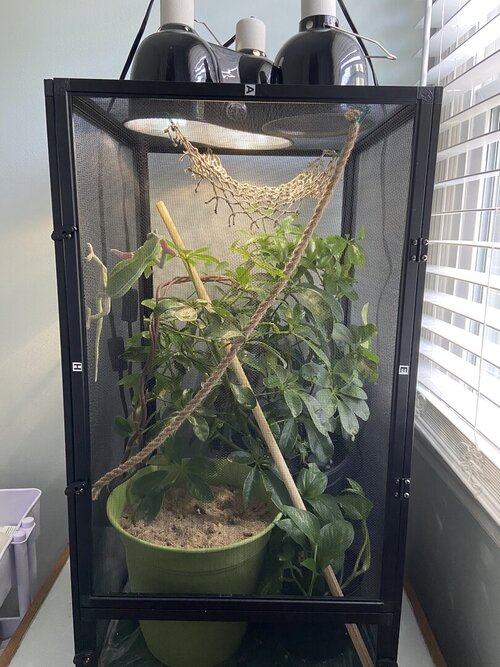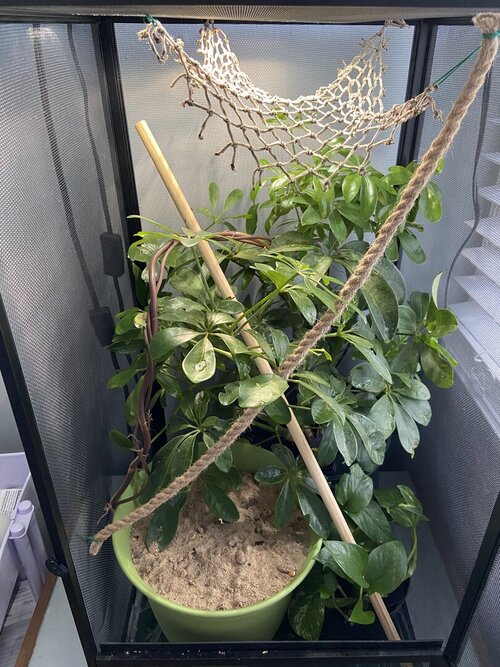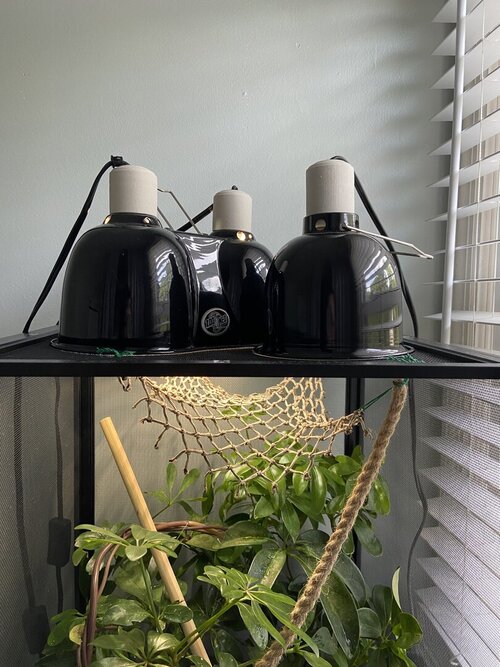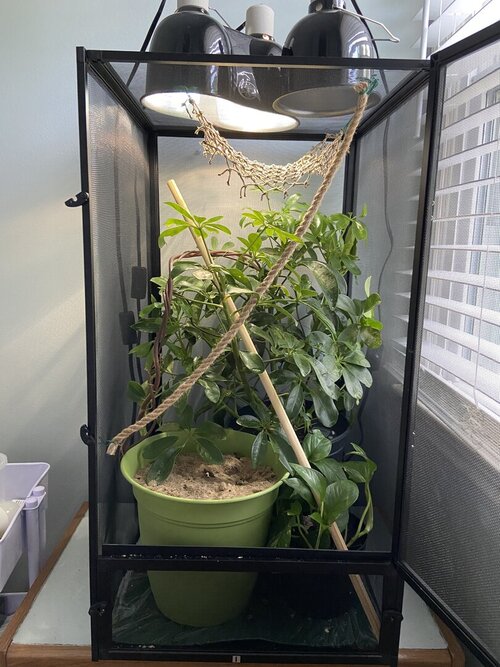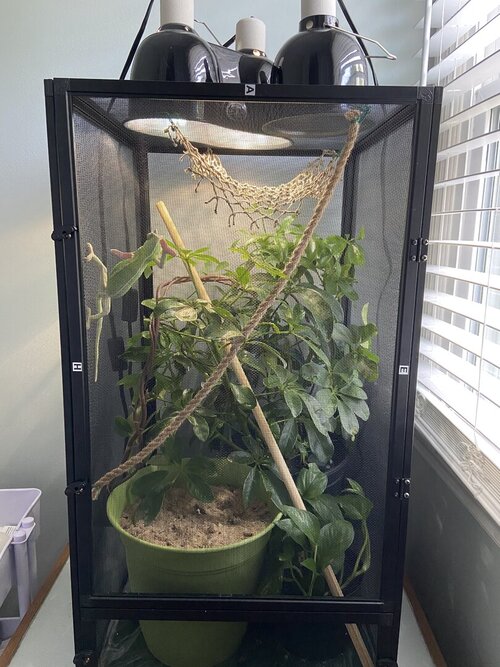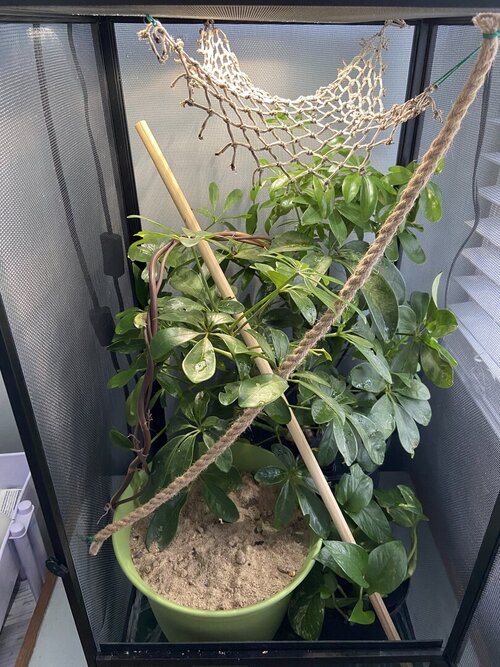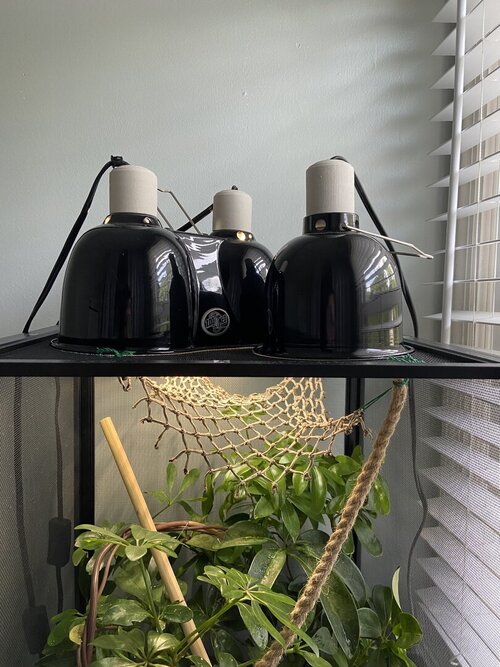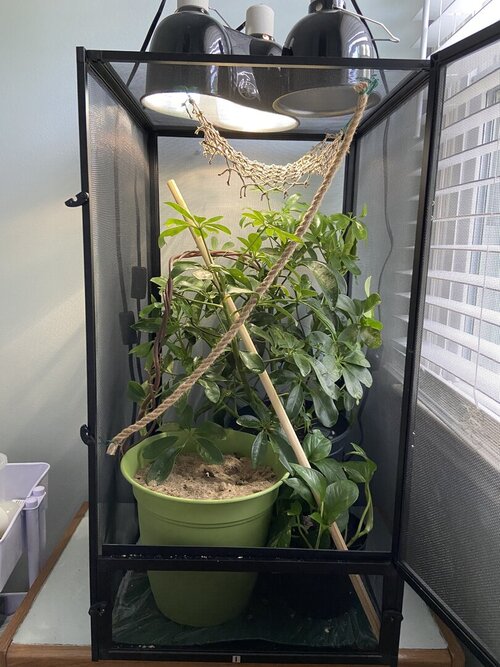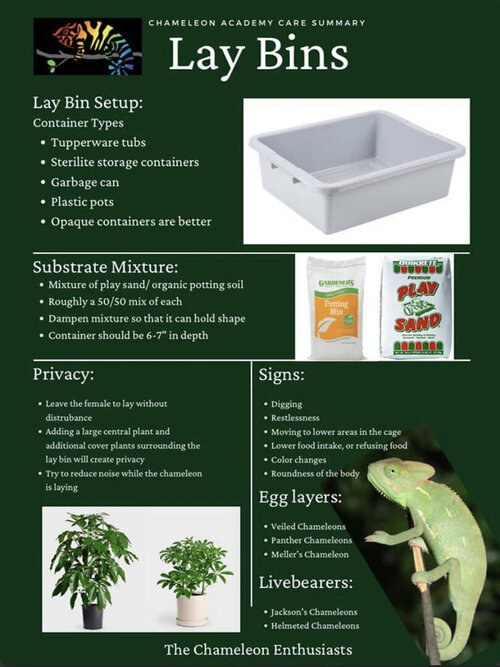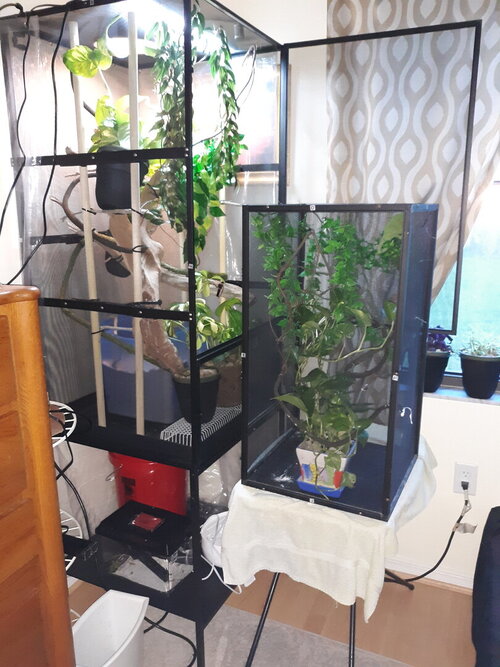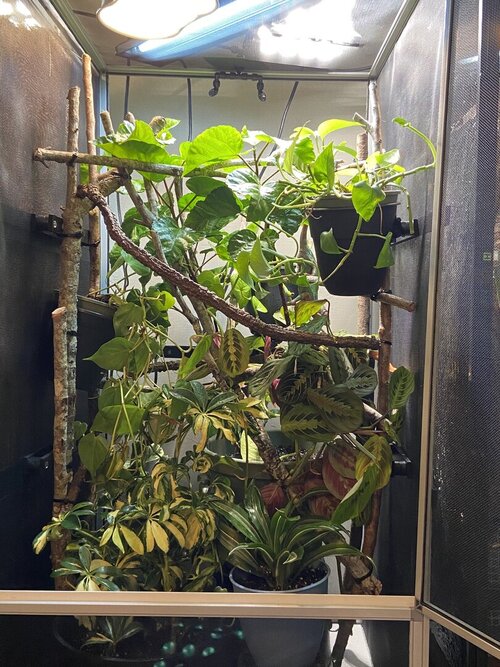lizardgirll
New Member
Hi everyone! I'm new to the site so I'm still trying to figure out how all this works. Anyway, I have about an 8 month old female veiled chameleon named Andi. She's very energetic and friendly and hates being inside her cage. I took her to the vet in July for a checkup and they told me that she should be laying eggs (unfertilized) in about 30-40 days. I put a little container of moss in there (per the vet's recommendation) but no eggs. After reading some of these posts, I realized she needs something better so I put a pot of sand in her tank. She still hasn't laid any eggs. She's very swollen and has been for a few months. The orange/yellow spots showed up in mid to late June. I'm not sure what to do. For lighting, I use a UVB bulb and a blue light bulb. I recently added a spot basking light because it wasn't warm enough. I spray her cage with water multiple times a day and her diet usually consists of vegetables and mealworms, sometimes crickets. Any advice/suggestions would be greatly appreciated! Attached are some pics of her.






